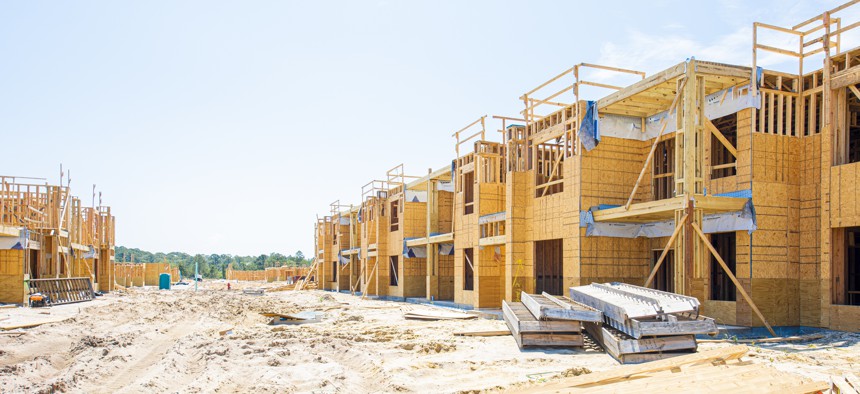It’s easy to lose sight of the root cause of the housing crisis

Dan Reynolds Photography via Getty Images
It’s not big investors, luxury developers or federal mortgage programs that are most responsible for driving up housing costs.
When it comes to housing costs, everyone points to a different culprit, like the institutional investors buying up homes and jacking up rents or the developers only interested in building luxury apartments.
But those explanations exist in the margins of the actual problem: There is not enough housing to meet the demand.
“It's just such a simple concept,” said Laurie Goodman, founder of the Housing Finance Policy Center at the Urban Institute. “But it's just so often ignored in so much of the rhetoric that surrounds supply issues.”
In a new report, Goodman and co-author Alexei Alexandrov aim to cut through all the tangential dialogue around housing costs. They identify four common scapegoats that derail conversations from addressing the underlying cause of rising housing prices: federal programs making mortgages more affordable, institutional investors scooping up properties and raising prices, developers building high-end homes and local governments unwilling to update zoning ordinances to allow greater density.
The first two scapegoats may impact whether a household can purchase a home rather than rent, but they don’t change the housing supply landscape itself. As the authors write in their report,“any factor that does not influence the housing supply or the demand for household creation is of second-order importance.”
Luxury developers, aka scapegoat No. 3, do add housing stock, and while those units may not be affordable to low-income households, expensive housing is better than no new housing at all. As higher-income households move into pricier developments, they make available less expensive units in a process known as filtering, the report said.
Local zoning codes, meanwhile, can have a profound impact on housing supply. But the restrictive regulations common nationwide can’t be entirely blamed on local governments, the report argued. The federal government can do more to help municipalities update zoning ordinances to allow for more dense development, Goodman and Alexandrov said.
That’s not to say the Biden administration hasn’t made any moves on that front. In July, the U.S. Department of Housing and Urban Development announced its Pathways to Removing Obstacles to Housing, or PRO Housing, program. The initiative provides $85 million in grants for communities to increase housing stock by updating zoning policies to allow developers to build more homes on available land. While a good start, the program doesn’t offer the comprehensive range of incentives and penalties needed to move the needle on the housing shortage, Alexandrov said.
“The current carrots at the federal level are along the lines of a few million … dollars of grants” and support to help communities determine the best ways to realign zoning to promote housing, he said. “But that’s just not nearly enough for municipalities to actually take action.” And without any kind of “stick,” such as less federal funding for communities that fail to increase density, communities are less likely to feel compelled to act.
The PRO Housing program falls under the Biden administration’s broader Housing Supply Action Plan, which is “a very good start, but it's an incrementalist approach,” Goodman said. Even if all the points in the plan were executed—including expanding federal financing for multifamily developments and incentivizing private developers to build affordable housing—it wouldn’t eliminate the deficit of millions of units that currently exists, Alexandrov added.
But the basic fact, the report concluded, is that “high home prices and rents are the result of the housing supply shortage, caused by more robust household formation relative to increases in the housing stock.”






